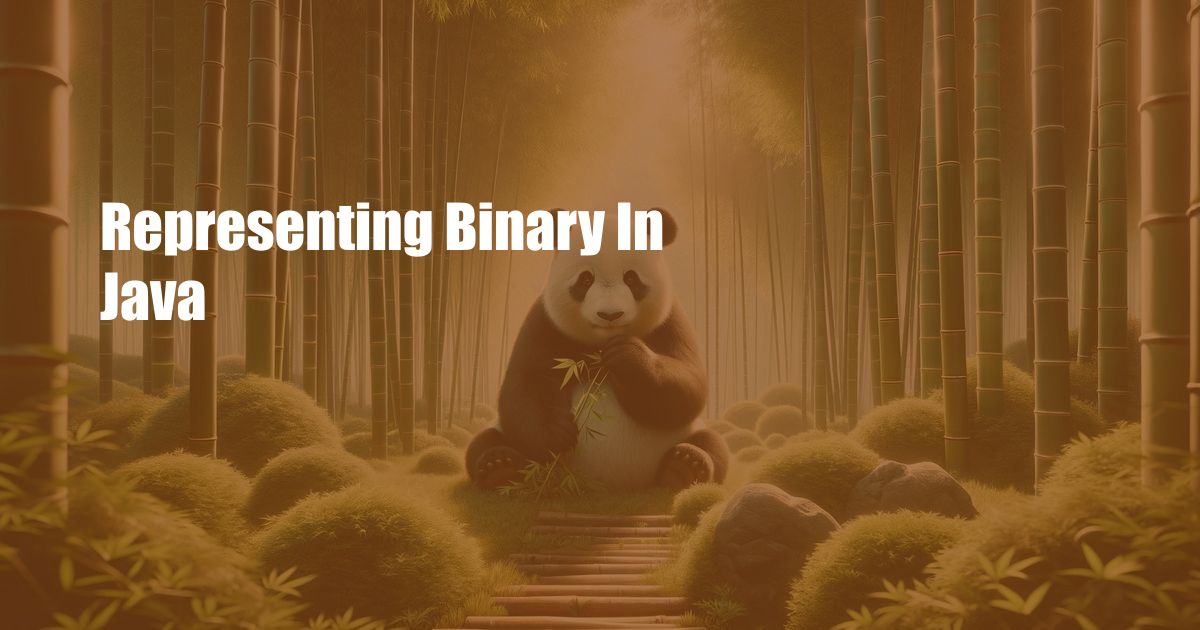
Representing Binary In Java
Binary representation is a fundamental concept in computer science. It’s the way computers store and process information. In this article, we’ll explore binary representation in Java and provide a comprehensive overview of its meaning, history, and applications.
A Digital Odyssey
Imagine a world where everything is represented by just two digits: 0 and 1. This is the essence of binary representation. Computers use this system to represent data because it’s the most efficient way to store and process information electronically. Binary digits, or bits, represent the fundamental building blocks of digital data. When combined in sequences, they encode everything from text to images to sound and more.
Understanding Binary Representation
Binary vs. Decimal
Binary representation differs from the familiar decimal system we use in everyday life. The decimal system uses 10 digits (0-9), while the binary system uses only 2. This means that binary numbers can be much longer than their decimal counterparts.
Bit, Byte, and Beyond
Individual binary digits are called bits. A group of 8 bits forms a byte, which is the basic unit of data storage in computers. Kilobytes (KB), Megabytes (MB), Gigabytes (GB), and Terabytes (TB) are all multiples of bytes used to measure larger storage capacities.
Binary Arithmetic
Binary arithmetic follows simple rules based on the values 0 and 1. The most fundamental operations are addition and subtraction. When adding binary numbers, each bit position is added together, considering the carryover from previous positions.
Binary Representation in Java
Primitive Data Types
Java provides primitive data types that represent binary values, such as int, long, and double. These types can store integer and floating-point numbers in different sizes and ranges.
Bitwise Operators
Java offers bitwise operators to manipulate binary values directly. These operators include & (AND), | (OR), ^ (XOR), and others. They allow programmers to perform logical and arithmetic operations on individual bits.
Binary Literals
Java supports binary literals, enabling developers to define binary values directly in their code. Binary literals are prefixed with 0b, followed by a sequence of 0s and 1s. For example, the binary literal 0b101011 represents the decimal number 43.
Latest Trends and Developments
Quantum Computing
Quantum computing is a rapidly developing field that promises to revolutionize binary representation. Quantum bits, or qubits, can exist in multiple states simultaneously, potentially leading to exponential increases in processing power and storage capacity.
Neuromorphic Computing
Neuromorphic computing aims to create computer architectures that mimic the structure and function of the human brain. Binary representation is essential in neuromorphic computing, as it provides the means for storing and processing the massive amounts of data involved in neural networks.
Tips and Expert Advice
Optimize Binary Operations
To improve performance when working with binary data, consider using bitwise operators instead of logical operators. Bitwise operators are more efficient for bit-level manipulations.
Use Binary Literals Wisely
Binary literals can enhance code readability, but use them sparingly in complex expressions. Consider using integer or floating-point literals for clarity and maintainability.
FAQs
Q: What is the difference between binary and decimal?
A: Binary uses only 0 and 1, while decimal uses 10 digits (0-9).
Q: How many bits are in a byte?
A: 8 bits.
Q: What does 0b110101 represent?
A: The binary literal 0b110101 represents the decimal number 53.
Conclusion
Understanding binary representation is crucial for comprehending the inner workings of computers. By exploring the concepts discussed in this article, you’ve gained a solid foundation in binary representation and its applications in Java. Whether you’re a software developer, computer enthusiast, or simply curious about the digital world, we encourage you to delve deeper into this fascinating topic.
Are you interested in learning more about binary representation and its implications in the realms of computer science and technology? Share your thoughts and questions in the comments below, and let’s continue the exploration together.







